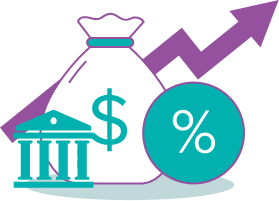
Competition to traditional banking businesses is a common theme these days. From fintech competitors and BigTechs to super apps, seemingly everyone is vying for a piece of the banking pie. Worryingly, these challenges come at a time when banks are facing increasingly hostile regulation and unprofitable business models. McKinsey and Company’s 2020 Global Banking Annual Review highlighted an alarming decrease in banking returns on equity (ROE) worldwide.1 Tighter regulation has contributed to this bleak picture, with banks forced to carry more capital reserves to mitigate risk. Most banking service and product offerings fail to address the modern customer’s needs, whether in customer or corporate banking. With customers growing accustomed to having their needs met proactively by BigTechs, a bank’s traditional approach to product design feels outdated. Here are three critical issues that currently afflict bank business models and why product innovation isn’t enough to solve them.

Poor Customer Relationship Mapping
A customer’s evaluation of a bank’s offerings often begins with the humble checking account. From a bank’s perspective, checking accounts offer access to customers in several ways. For starters, they offer banks low-cost access to funds.7 Second, they also present the opportunity to cross and upsell to customers. Checking account customers tend to be loyal, thanks to the high switching costs of changing banking providers. However, this loyalty has been severely tested by high overdraft fees that come pre-packaged with “free” checking accounts forcing banks to think about how poor customer relationship mapping and a lack of price-led innovations can impact customer retention and loyalty.

One way of ensuring greater customer acceptance is to increase the value perception of premium accounts. Using price to signal quality is standard practice in many industries, but banks have been reluctant to adopt these strategies. Placing a price tag on premium accounts and giving customers fee waivers based on certain conditions allows banks to increase revenues and change service perception.
Corporate banking issues are different. In this line of business, there is an acute lack of customer segmentation, thanks to outdated models of customer communication. Customers these days expect (and in some cases demand) omnichannel touches to keep conversations going. Customization is the need of the hour as banks must develop industry-specific solutions to retain and attract clients. Underlining all these initiatives is the concept of invisible banking, where a bank automatically suggests products and value to customers proactively, just as a need arises. This business model of relationship-based pricing solutions is possible only if banks use customer data to analyze user pain points and tie them to value propositions that make sense. Banks must also use data to understand which stage of the buyer’s journey a customer is in before suggesting solutions.
Rigid Product Offerings

Despite this rosy picture, there are improvements to be made. For starters, customers are extremely sensitive to annual fees. Banks should consider dropping fees for cards at low dollar values, and instead look to recover lost revenues through greater market share. Communication of rewards and benefits also lags other industries as most customers cannot relate to the number of points they earn.
For instance, most customers have no idea what dollar amounts their 10,000 or 15,000 points translate to. Rewards calculation is cumbersome, with different merchants offering different compensation. The result is a scenario where customers know they’re receiving benefits but cannot quantify them. This leads to a feeling that they aren’t in control of their rewards.4 Reframing benefits in dollar values (or any currency) is a positive step, given how informed customers are these days.
Pushing customers to use mobile wallets is another step banks can take to deal with the threat from super apps. It allows banks to own their customers and speeds up approval processes thanks to digitized workflows. These product-led innovations still have some holes due to a lack of pricing innovation.
As productive as the credit card business is, the mortgage business has seen some shocks over the past two decades. Regulatory and compliance requirements have changed the economics of the business for traditional banks. Online lenders have further taken a chunk of the market with faster approval times and sophisticated credit models.
Customers are sensitive about interest rates above all else. Given that this is the profit lifeline for a bank in the mortgage business, any reframing of the messaging around interest rates must be handled with care. For instance, one way of reducing interest rate sensitivity is to bundle mortgage-related services. Banks can offer title examinations, property appraisals, and surveys in addition to the mortgage.
Another approach is to charge an origination fee and offer bundled services while lowering the interest rate. This model communicates value to the customer while maintaining profit levels for a bank.

Lack of Price-Based Innovation
While a lack of customer knowledge and rigid product offerings are a stumbling blocks, perhaps the biggest issue banks face is the focus of their current pricing strategies. Most bank pricing models run on a cost-plus basis, where the bank’s primary focus is to cover costs and earn a profit.
When looking at corporate and credit-driven businesses, the focus is risk-based, an even more pessimistic model.5 The bank’s primary focus is on avoiding a loss at all costs and this leads to stringent requirements placed on customers. While bundled offers reduce the negative impact, these models lie in stark contrast to those adopted by technology-driven industries.
A cursory look at the travel and ride-sharing industries indicates how far these businesses have taken a value-based pricing model. BigTechs and fintech companies offer value-based pricing models that are central to all SaaS businesses.6 Customers pay only for the services they use and can easily scale up or down depending on their needs.
This flexibility is missing in traditional banking currently. For instance, credit cards are a shining example in retail banking, but the thought of a flexible annual fee or customizable rewards structure is unthinkable right now. Customers cannot scale or customize their spending to tailor their rewards experience.
Product-Based Innovation is not Enough

While product-based innovation should continue, it will need to be supported with a digital-based pricing innovation. At the core of this will be a value-based pricing approach that rests on a detailed understanding of the customer’s relationship and journey with the bank. Understandably, banks have encountered issues in designing pricing models and innovating in this field. Our next article in this series dives deeper into these issues.
For now, it’s apparent that given the scope of challenges banks face from their competitors, a cloud-based banking solution that allows banks to deploy price-led innovation with ease and agility is the need of the hour.
Sources:
2,3Deloitte